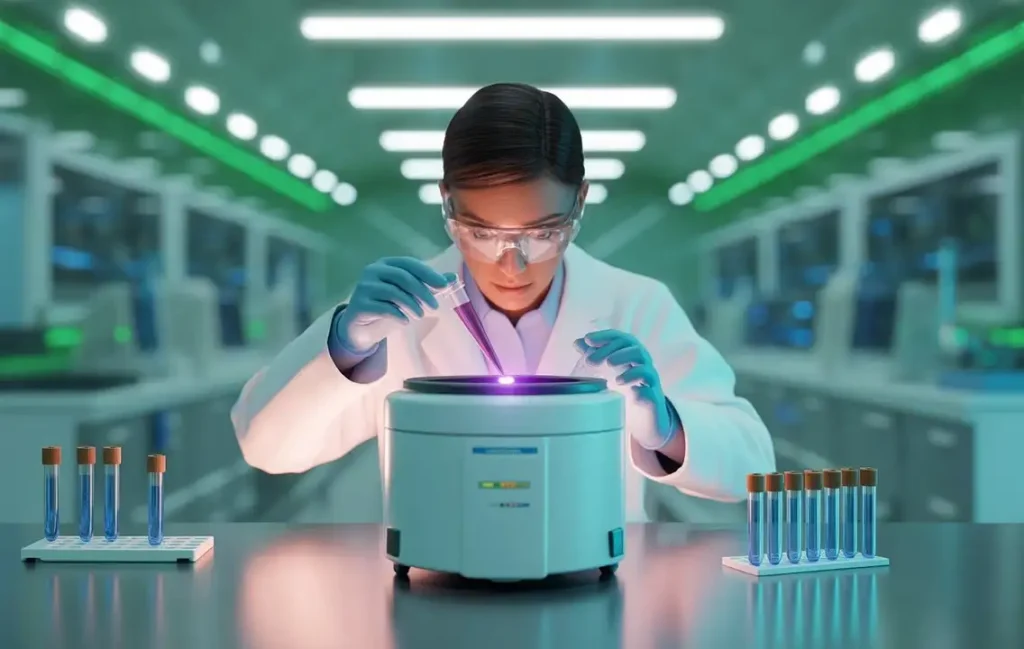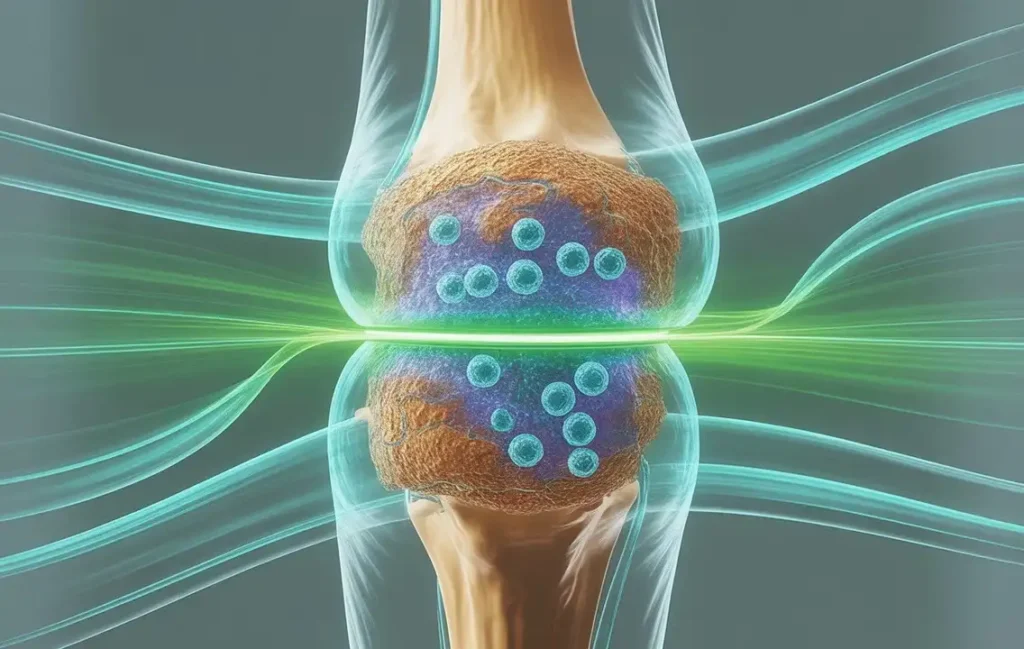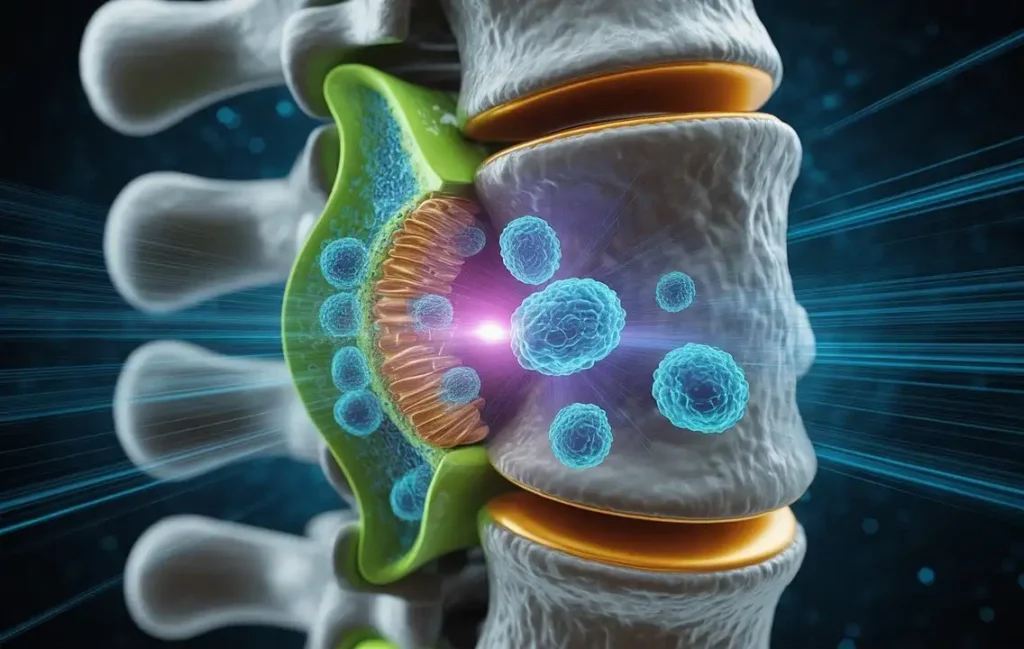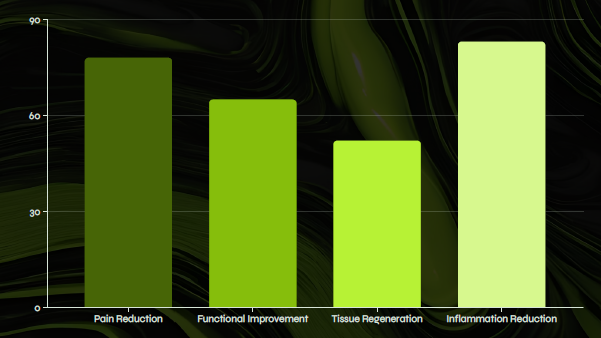Revolutionizing Orthopedic Medicine with Exosofies
Discover how these tiny cellular messengers are
transforming treatment for bone, joint, and tissue
injuries. Swipe to learn the science behind the next
frontier in regenerative orthopedics.
What Are Exosomes?
Nanoscale Vesicles:
30-150 nanometers in diameter – invisible to the naked eye yet powerful enough to transform cells
Cellular
Communication:
Act as messengers between cells, transferring genetic information and proteins that trigger healing responses
Biological Signaling:
Contain regulatory molecules that instruct cells to repair, regenerate, and reduce inflammation
Inside These Healing Particles

Proteins
Growth factors, cytokines, and enzymes that
stimulate healing and tissue repair
Nucleic Acids
mRNA, miRNA and other genetic materials that
regulate cell function and protein expression
Lipids
Membrane components that enable exosomes
to fuse with target cells and deliver their
therapeutic cargo
This unique composition allows exosomes to deliver complex healing instructions to damaged tissues in orthopedic conditions, initiating repair processes naturally

From Cells to Treatment
Cell Culture
Mesenchymal stem cells or platelets are grown in specialized laboratory conditions to produce exosomes
Isolation
Ultracentrifugation, filtration, or precipitation techniques separate exosomes from other cellular components
Purification
Exosomes are purified and characterized to ensure quality and therapeutic potential
Why Exosomes Outperform Stem Cells
No Cell Survival Issues
Unlike stem cells, exosomes don’t need to survive in the body to exert their therapeutic effects
Lower Immune
Rejection Risk
Exosomes provoke minimal immune response compared to whole-cell therapies
Easier Storage and Transport
Can be freeze-dried and stored at room temperature, making clinical application more practical
Consistent Dosing
Allow for standardized therapeutic formulations with predictable potency

Fighting Osteoarthritis with Exosomes
Inflammation Control:
Exosomes modulate immune response in the joint, reducing destructive inflammation
Cartilage Preservation
Protect existing cartilage cells from further damage by blocking destructive enzymes
Tissue Regeneration
Stimulate chondrocytes to produce new cartilage matrix components and restore joint function
- Articles:
Stop Hair Loss & Regrow with Exosome Therapy
Healing Tendons Faster and Better
Exosome Benefits for Tendon Injuries:

Enhanced Collagen Organization
Promotes parallel alignment of new collagen fibers for better strength
Reduced Scarring
Minimizes formation of disorganized scar tissue that limits function
Faster Recovery
Accelerates healing timeline for quicker return to activity
Building Stronger Bones
Fracture Healing: Exosomes stimulate osteoblasts to form new bone tissue and enhance mineralization, speeding up repair at fracture sites by up to 30%
Osteoporosis Treatment: Balance the activity of bone-building osteoblasts
and bone-resorbing osteoclasts, helping restore bone density in weakened areas
Implant Integration: Coat orthopedic implants with exosomes to improve osseointegration and reduce rejection risks after joint replacement surgeries

Rescuing Degenerating Discs
Anti-Degeneration:
Halt breakdown of disc matrix components to prevent further degeneration
Re-Hydration:
Stimulate production of proteoglycans that attract water back into dried discs
Pain Reduction:
Decrease inflammation around nerve roots to alleviate radiating back pain
What the Research Shows
Recent clinical trials show promising results across multiple orthopedic applications. In a 2022 study of knee osteoarthritis patients, 78% reported significant pain reduction after exosome treatment, while MRI scans confirmed cartilage improvements in 52% of subjects within six months.
Getting Exosomes Where They're Needed
- Direct Injection
Precisely delivered into joints, tendons, or around fracture sites for localized treatment with minimal systemic exposure - Biomateria l Scaffolds
Exosomes embedded in collagen or synthetic matrices that provide sustained release at the injury site
- Hydrogel Delivery
Injectable gels that solidify at body temperature, creating a reservoir of exosomes for extended therapeutic effect
A Safer Treatment Approach
<1%
Adverse Reactions
Minimal risk profile compared to 15-20% for cellular therapies
0
Tumor Formation
No risk of unwanted cell growth unlike stem cell treatments
99.7%
Treatment Completion
Patients able to complete full protocol without complications
Clinical safety data shows exosome therapies have significantly fewer complications than traditional stem cell approaches. The cell-free nature eliminates risks associated with cellular transformation while maintaining therapeutic benefits.
The Future of Orthopedic Medicine
Genetically Engineered Exosomes
Custom-designed cargo for specific conditions
Targeted Delivery Systems
Surface modifications for precise tissue targeting
Patient- Derived Treatmen ts
Personalized exosomes from your own cells.
Transform Your Orthopedic Health Journey
Exosome therapy represents a cutting-edge approach to orthopedic healing that could provide relief where traditional treatments have failed. If you’re struggling with joint pain, tendon injuries, or other musculoskeletal conditions, talk to a regenerative medicine specialist about whether exosome therapy might be right for you. Tag someone who could benefit from this information about the future of orthopedic medicine, or share this post with anyone interested in innovative medical advances!




No comments